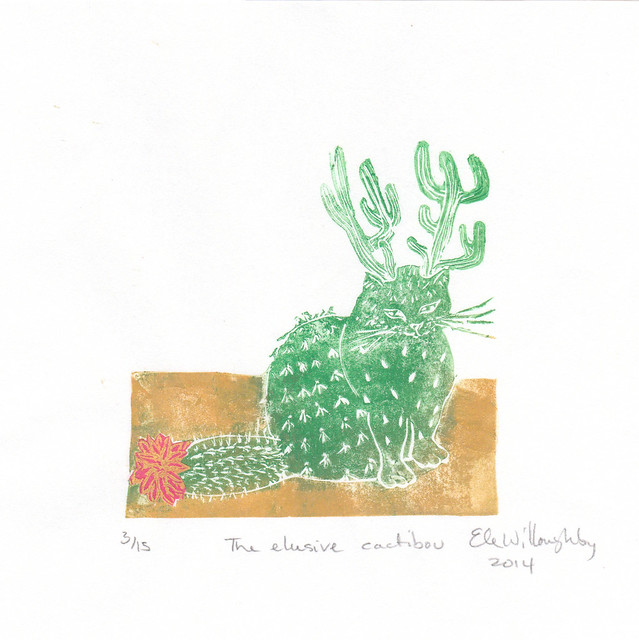The Cactibou

Cactibou (Felis Cactaceae)
Unexpectedly, this strange and elusive desert cat has traded some genes with local cacti species. Like the golden jellyfish who live symbiotically with algae-like zooxanthellae in order to produce food from sunlight, this animal has evolved to feed itself through photosynthesis, in times of scarcity of prey during harsh desert droughts. Hence its strong green colour, indicative of chlorophyll pigments. Much like the camel, who thrives in the desert thanks to its water-filled hump, the cactibou carries its own water by adopting the cactus' water-storing strategy. Its outer, plant-like shell is rich with water. It has likewise adopted the cacti's defense, with its sharp spines. The brightly-coloured tail flourish, resembling a flower is used by the male of the species to attract a mate. Surprisingly, though the antlers do resemble miniature saguaro cacti, they are in fact antlers - bony extensions of the skull, like those grown by caribou and other deer. They apear to play a role in sexual selection, as large elaborate saguaro-antlers attract female cactibou, and the males employ them when fighting with other males. The antlers help cool the cactibou in the heat, by providing a large surface area of skin above a dense network of blood vessels, like the oversized ears of the jackrabbit or gerboa. The antlers are shed in the fall (insofar as there is a fall or autumn season in the desert) and regrown in the spring. Ethnobotanists report the widely-held local belief that the shed antlers can be caught in wind-blown tumble-weed and spread to a new location where they grow roots and a new cat emerges from the ground beneath the next spring. The veracity of this belief has been a point of contention amongst scholars since the Middle Ages.